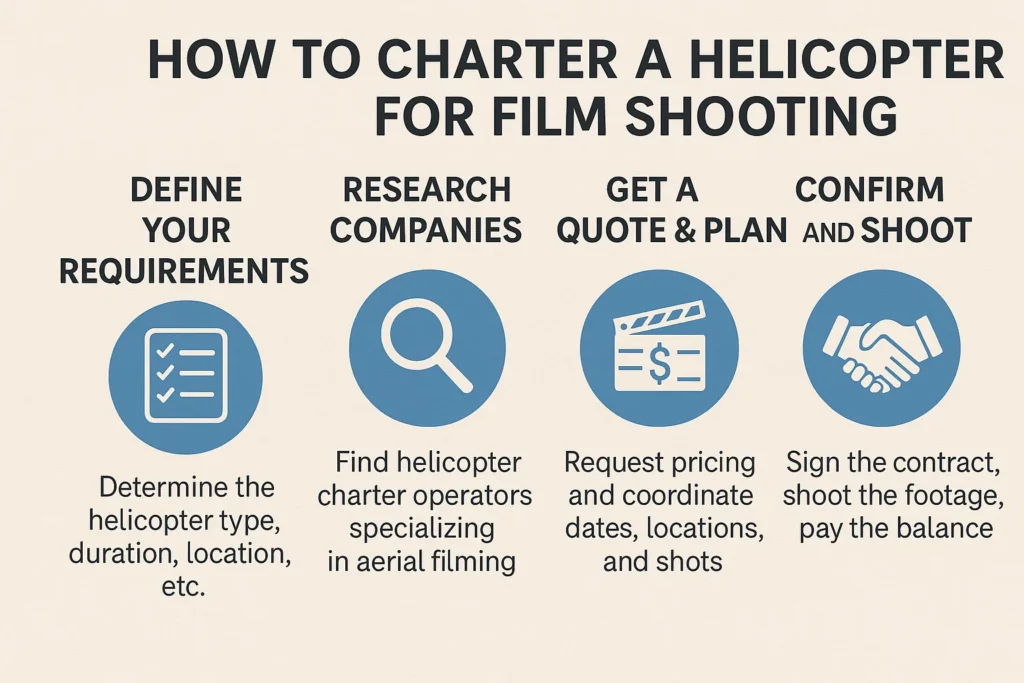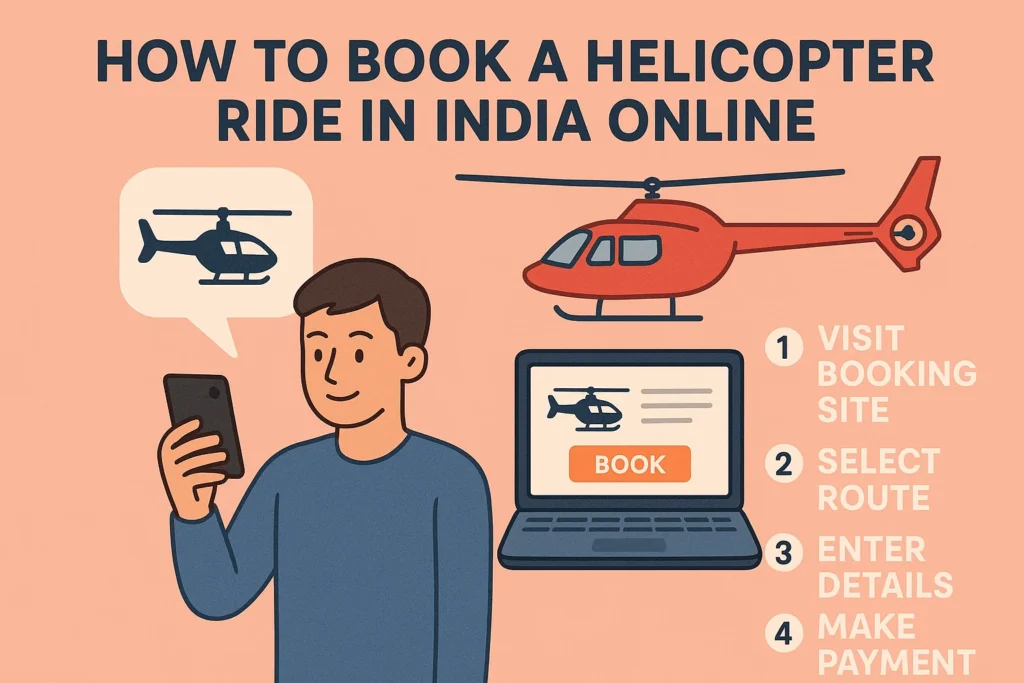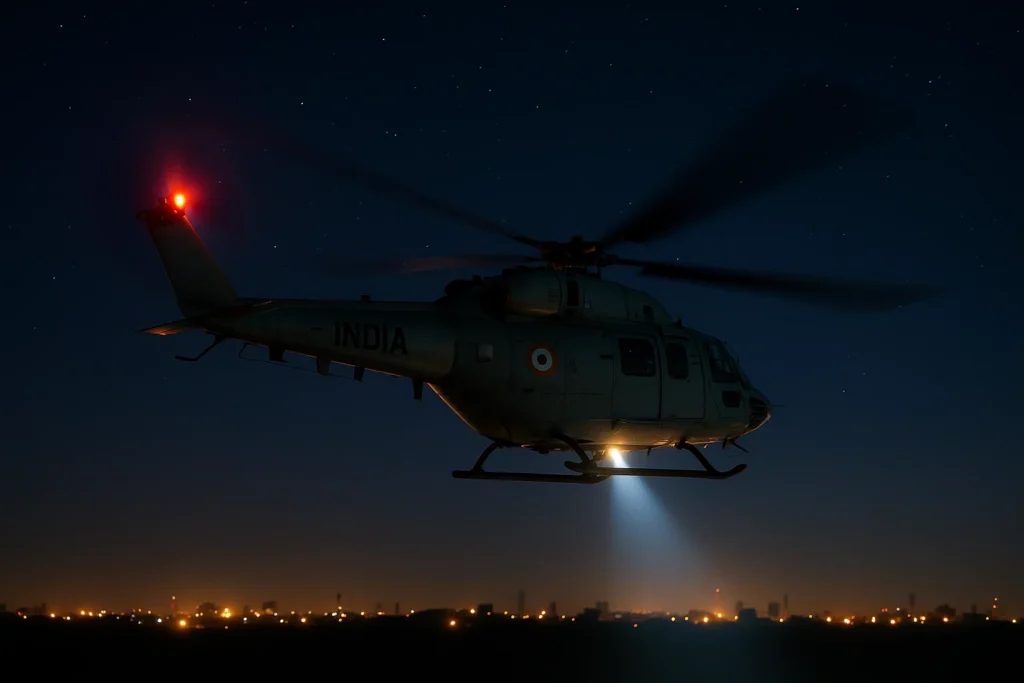✨ Introduction: How to Charter a Helicopter for Film Shooting
Helicopters offer unique aerial shots that add an exciting dimension to film productions, whether for action sequences, scenic views, or high-speed chase scenes. Chartering a helicopter for a film shoot can elevate the production quality of your project, but it requires careful planning, permits, and coordination with experienced operators.
In this blog, we’ll guide you through the steps to charter a helicopter for film shooting, covering everything from initial planning to cost considerations and the permissions you need to ensure a smooth and successful aerial shoot.
🌍 Step 1: Understand Your Filming Needs
Before chartering a helicopter, it’s crucial to understand the specific requirements of your film shoot. This will help determine the type of helicopter you need, the duration of the flight, and any special equipment or services.
🎬 Define the Aerial Shots Required
-
Scenic Shots: Are you filming breathtaking landscapes, cityscapes, or natural landmarks?
-
Action Sequences: Will you need a camera-equipped helicopter to follow a high-speed chase or capture dynamic action scenes?
-
Stabilized Shots: Will you require stabilization equipment (e.g., gyroscopic camera mounts) to ensure smooth footage during flight?
🏞️ Determine the Flight Duration
-
Will the shoot involve short flights over a specific location, or do you need an extended aerial shoot over a larger area?
🌍 Step 2: Choose the Right Helicopter Type
Choosing the right type of helicopter depends on the scope and nature of your film shoot. Here are some options:
🚁 Light Helicopters
-
Ideal for short shoots or small crews.
-
Suitable for scenic shots or simple aerial tracking.
🛩️ Medium-Sized Helicopters
-
Can carry more equipment or larger film crews.
-
Typically used for longer duration shoots or dynamic action sequences.
🚁 Heavy Helicopters
-
Perfect for large productions requiring heavy camera equipment, multiple crew members, and extended flights.
-
Often used for complex stunts or large-scale aerial shots.
Make sure the helicopter you choose has enough weight capacity to handle the camera gear, crew, and any additional equipment you might need onboard.
🌍 Step 3: Research Helicopter Charter Companies
When looking to charter a helicopter for your film shoot, it’s essential to choose a reliable and experienced helicopter operator. Here are some important factors to consider when selecting a company:
🔍 Experience with Film Shoots
Look for companies that specialize in providing helicopters for film productions and have experience handling aerial filming. Operators with film industry experience understand the specific requirements of camera stabilization, filming angles, and flight safety protocols.
🚁 Safety Standards
Ensure that the helicopter operator follows all DGCA (Directorate General of Civil Aviation) safety regulations, has a qualified crew, and maintains well-maintained helicopters. Safety is paramount when working with complex aerial shots.
💰 Cost Considerations
The cost of chartering a helicopter can vary widely based on the type of helicopter, duration of the flight, and equipment needed. Operators usually charge based on flight hours, with additional costs for camera equipment, crew, and extra services (such as chase helicopters).
-
Hourly Rates: Helicopter rentals for film shoots generally range from ₹1.5 lakhs to ₹3 lakhs per hour, depending on the helicopter type and location.
-
Extra Costs: Additional services, such as stabilization equipment, pilots’ overtime, or insurance, may increase the total cost.
🌍 Step 4: Obtain Necessary Permits and Approvals
Filming with a helicopter requires obtaining specific permits and approvals from local aviation authorities. In India, you need to coordinate with the DGCA (Directorate General of Civil Aviation) and local authorities to ensure you meet all legal and safety requirements for aerial filming.
📝 Required Permits
-
Permission from DGCA: For aerial filming, you’ll need a special permission from DGCA, which covers flight routes, timing, and safety protocols.
-
Film Shooting Permission: If filming in a specific location, such as protected areas or private properties, you may need local government approval.
-
Airspace Clearance: If you’re filming in a restricted airspace, such as near airports or military areas, special clearance from air traffic control will be required.
📅 Planning and Scheduling
-
Work with the helicopter operator to schedule the flight times around weather conditions, air traffic, and the availability of necessary airspace.
🌍 Step 5: Prepare for the Helicopter Film Shoot
Once you’ve arranged the helicopter charter and obtained the necessary permits, you’ll need to prepare for the actual shoot. Here’s what you should do:
🎥 Set Up Camera Equipment
-
Ensure that the camera gear is mounted securely, either on a stabilized platform or mounted to the helicopter. Some helicopters are equipped with gyroscopic camera mounts for smooth footage during flight.
🚁 Coordinate with the Pilot
-
Communicate your filming needs and flight plan with the helicopter pilot. The pilot will need to know exactly where you want to fly, what kind of shots you’re aiming for, and any special requirements.
🎬 Film Crew Readiness
-
Ensure that your film crew is ready with all the safety equipment (such as headsets, seat belts, and life vests) and that they understand the flight plan.
⏳ Test Flights
-
It’s always recommended to conduct a test flight before the actual shooting day to check for any camera angles, light conditions, or technical issues.
🌍 Step 6: Execute the Aerial Film Shoot
On the day of the shoot, ensure everything is well-coordinated:
-
Arrive early to make sure all equipment is prepared and safety checks are complete.
-
Monitor weather conditions to ensure optimal visibility and smooth flight.
-
Ensure safety protocols are followed throughout the shoot to protect both the crew and the aircraft.
🌍 Step 7: Post-Shoot Considerations
After the film shoot is complete:
🚁 Return and Inspection
-
The helicopter will undergo a post-flight inspection to ensure everything is in proper condition. This ensures the safety of both the crew and the equipment for future flights.
🎬 Footage Review
-
Review the aerial footage to ensure the shots meet your expectations. If necessary, additional re-shoots can be arranged.
💰 Finalize Payment
-
Once the shoot is completed, finalize payment with the helicopter operator based on flight hours, additional services, and any over-time charges.
🌍 Conclusion: Chartering a Helicopter for Film Shooting
Chartering a helicopter for a film shoot can provide incredible aerial shots, but it requires careful planning, coordination, and adherence to safety protocols. By following these steps, you can ensure that your helicopter film shoot goes smoothly, providing you with stunning footage for your production.
At DreamSafar, we specialize in providing helicopter services for film productions, offering experienced pilots and well-maintained aircraft equipped with the latest camera stabilization systems. Ready to take your film shoot to new heights? Book your helicopter ride today and elevate your production!
🔗 Useful Links:
Resources:
❓ FAQ Section:
Q1: How much does it cost to charter a helicopter for a film shoot?
A1: The cost can range from ₹1.5 lakhs to ₹3 lakhs per hour, depending on the helicopter type, equipment, and additional services required.
Q2: Do I need permission to film with a helicopter in India?
A2: Yes, you will need to obtain special permissions from the DGCA, local authorities, and air traffic control for aerial filming.
Q3: Can I use my own camera equipment in the helicopter?
A3: Yes, you can use your own camera equipment, but it must be securely mounted to the helicopter with proper stabilization systems.


